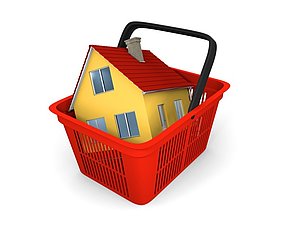Buying and selling of real estate
Event description

In sales of immovable property, the seller is liable for real estate transfer tax except in sales subject to VAT.
What is the seller required to do?
The seller must file a form called Real estate transfer tax return with the tax office in the territory of which the real property is located within 15 days of the conclusion of the agreement. The seller must attach to the tax return the original purchase agreement and, if ownership is not shown in the land register, a proof of ownership.

Example of a completed form

Did you know?
The payer of real estate transfer tax is the seller of property. The payer of real estate transfer tax may also be the buyer of the property if so stated in the purchase agreement.
Assessment and payment of real estate transfer tax
After receiving the tax return, the tax authority assesses the real estate transfer tax (2% of the value of property). If the tax authority establishes that the contractual value reflects the comparable market value, it will issue a decision in a fast-track procedure and serve a payment order on the person liable for income tax. When the tax authority determines that the person liable for income tax has paid the amount stated on the payment order (at a post office or bank), the tax authority confirms, on the original purchase agreement, that the tax has been assessed and paid. Without a certificate of payment of real estate transfer tax it is not possible to have signatures on the purchase agreement notarised or to register the property right in the land register.
The real estate transfer tax constitutes the revenue of the municipality in whose territory the property is situated and is paid into the municipality's transitional sub-account SI, payment reference code SI19 DŠ-14001.
The seller of the property is a taxable person identified for VAT purposes
The seller must check if this supply is subject to VAT or not. The supply of land except building land (plots intended for construction according to the municipal spatial plan) is exempt from VAT. The supply of unbuilt building plots is taxed at the general rate of 22%.
The supply of buildings or parts thereof, and of the land on which they stand, unless the supply is performed before the buildings or parts thereof are first occupied or used or if the supply is performed prior to the expiry of the two-year period from the commencement of the first use or first occupation, is also exempt from VAT.
The supply of built-up building plots is taxed together with the buildings built on them (pursuant to the provisions of the ZDDV-1 relating to the taxation of buildings) since the land on which the buildings are built is not subject to independent VAT taxation.
The supply of building plots built-up with buildings for which the two-year period from the commencement of the first use or first occupation has expired is exempt from VAT. If both the seller and the buyer are identified for VAT purposes and if the seller is entitled to full VAT deduction, the seller and the buyer may agree that VAT may nevertheless be charged for the transaction. Before the supply, the taxable persons must reach a written agreement, which is to include at least a clear expression of will to charge VAT on their transaction, the taxable persons' VAT identification number, their status of contracting parties and an indication of the property to which the agreement relates. The taxable persons must prove the existence of a written agreement upon request from the tax authority. There is no specific form specified for a written agreement (it may be in the form of a contractual provision or in the form of a self-contained document). Liability for VAT must be shown on the buyer's VAT return (VAT reverse charge procedure pursuant to Article 76a of the ZDDV-1), and the seller must report on that supply in box 11a of the VAT return DDV-O and submit a PD-O form – Report on supplies.
The supply of building plots built-up with buildings for which the two-year period from the commencement of the first use or first occupation has not yet expired is subject to VAT. VAT is charged for the supply at the general rate of 22%. The supply of dwellings, housing and other facilities indented for permanent living and parts thereof, if they are part of a social policy, are subject to a lower VAT rate.
A seller identified for VAT purposes must enter the supply of real property in his/her VAT return:
- if VAT is charged by the seller: in boxes 11 and 21 or 22,
- if VAT is charged by the buyer (if the seller and the buyer opt for the taxation of the supply which would be otherwise exempt from VAT – Article 76a of the ZDDV-1: in box 11a.
A buyer identified for VAT purposes must enter the supply of real property in his/her VAT return:
- if VAT is charged by the seller, in boxes 31, 34 (notwithstanding whether the supply is subject to or exempt from VAT) and in box 41 or 42 if the seller is entitled to deducted VAT for such property;
- if VAT is charged by the buyer (if the seller and the buyer opt for the taxation of the supply which would be otherwise exempt from VAT – Article 76a of the ZDDV-1): in boxes 25 or 25a, 31a, 34 (notwithstanding whether the supply is subject to or exempt from VAT) and in box 41 or 42 if the buyer is entitled to deducted VAT for such property.




